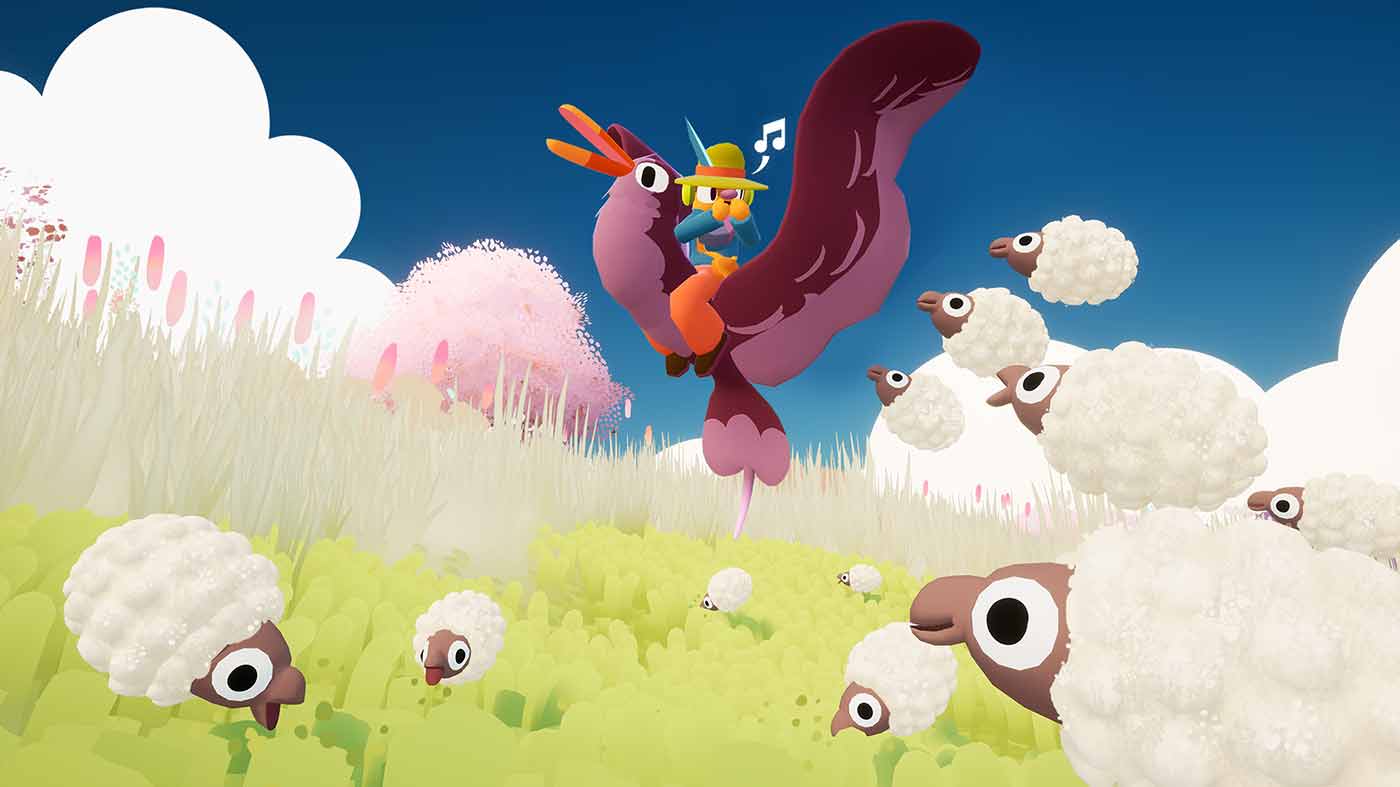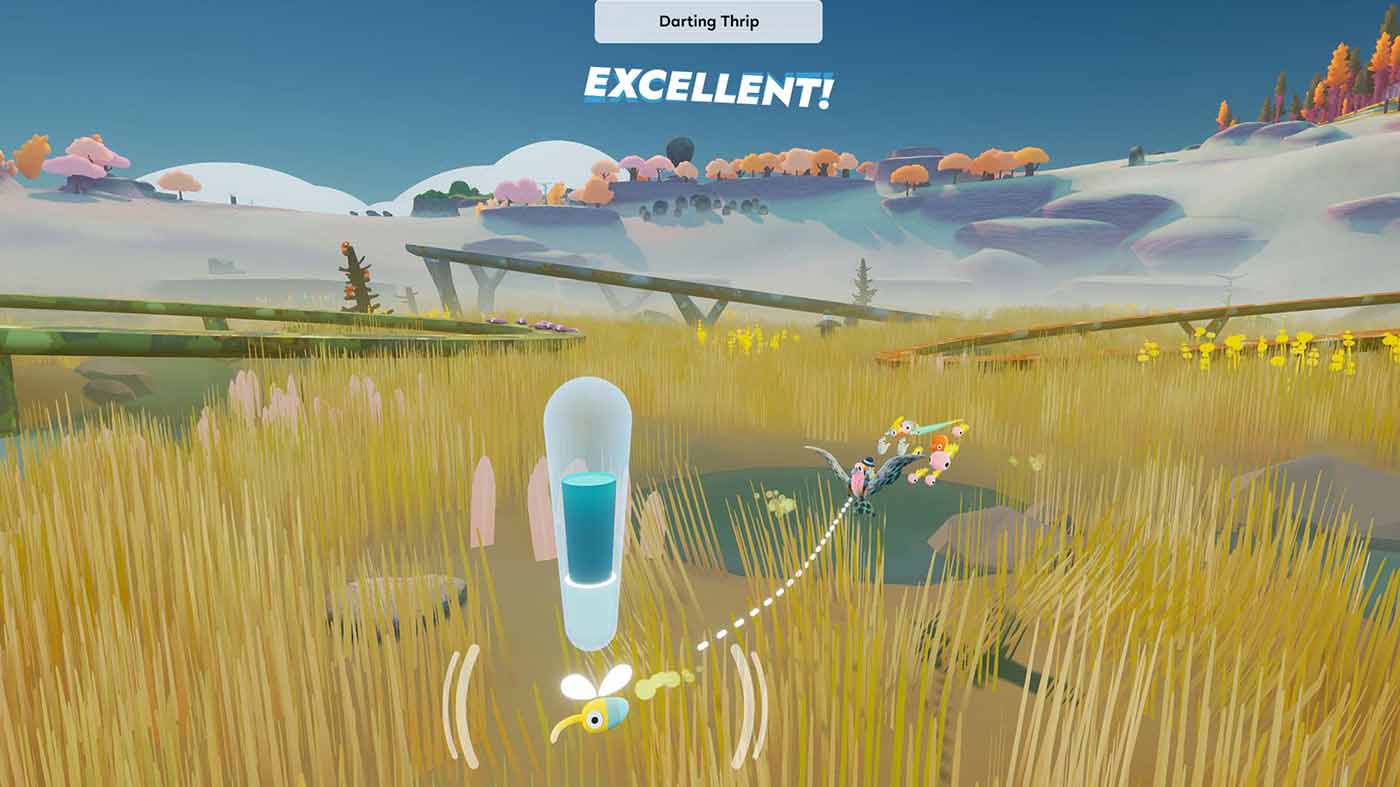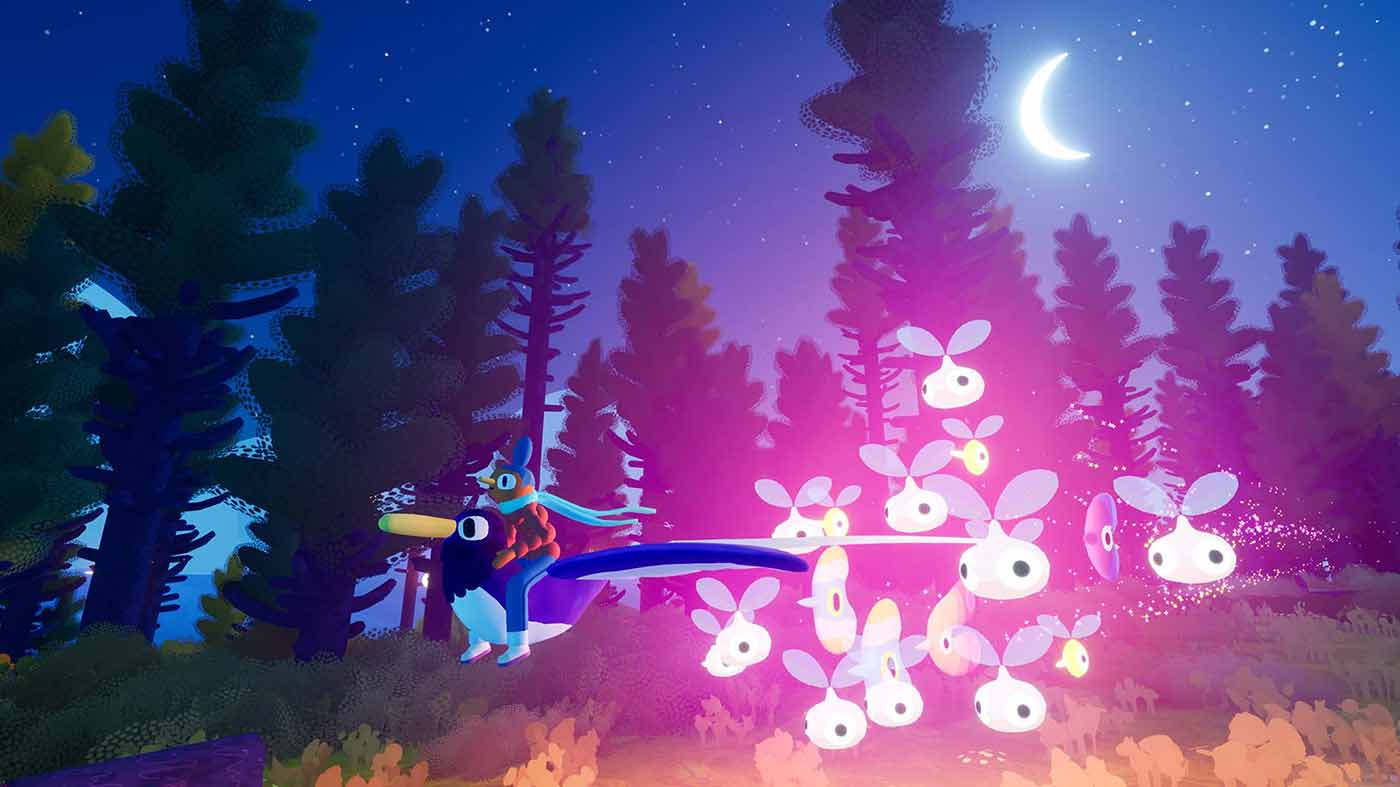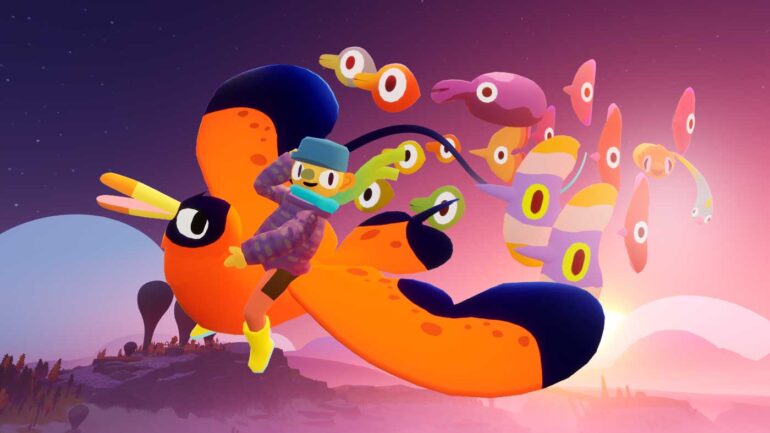Flock might feel like a cosy riff on the Pokémon formula for creature round-up, but more than anything it feels like a love letter to both flight and a keen eye. Observation and discovery are both integral to the game’s core loop and I quite enjoyed how the team found peaceful departures from Nintendo’s regular loop of conquering through force in favour of the kindness of charm, singsong mimicry, and recognising patterns and habits.
Palworld, for all of its iron fist rule, might have been the Pokémon game people had been wanting, but I think I prefer Flock’s softer approach where no creature, sheep or otherwise, is harmed for the sake of a little fun.

Flock is a charming take on the “catch ‘em all” formula, placing a huge trilling bird under butt to let you soar like a leaf on a breeze through a vivid, colourful uplands full of several biomes. Those nearest to your Aunt Jane and Uncle Reg’s quaint farm are made up of non-descript grassland, but with every cloudfall more of the game’s world is revealed to include mossy mushroom forests and wetlands.
The ultimate aim of the game is to use the power of your peepers to observe an enormous catalogue of curious creatures in their habitat, charm them and, ultimately, welcome them into your entourage. If you’re off-track and struggling to unearth rarer species, the encyclopaedia can offer vague hints that point generally in the right direction. In any case, the way Flock rewards a studious nature is certainly a gentler approach that, I imagine when compared to grinding your soon-to-be captive pet down through an arduous battle, delivers a better message to a younger audience.

The game’s sixty or so critters are catalogued by species, and can ultimately be recognised from their specific characteristics and behaviour. Bewls are worm-like little cuties and Skyfish are exactly what you’d expect, the creatures feel like they’re pulled straight from page-to-screen out of a Dr. Seuss picture book. In addition to the many animals you’re able to charm, you can discover, name, and shepherd a small flock of sheep that can be let loose to graze in meadows that obscure the game’s many secrets: valuable whistles required for charming, baubles that somehow increase your flock’s capacity, and fashion catalogues full of fresh wardrobe ideas that let you convert your sheep’s shorn wool into handsome scarves and mittens among other things.
For all of the menus Flock has, one thing I repeatedly found to be a tad obscure was the game’s narrative structure and how things like cloudfalls were triggered. It was clearly tied to the discovery of a few “legendary” variants, happening upon these quest lines felt like a happy accident more than anything else. I’m able to see so much in the menus: a hugely customisable map with more toggles than you’d know what to do with, a comprehensive catalogue of the creatures I’ve seen and charmed, what I can only describe as an “about us” team splash page for my sheep, and yet there’s no meaningful objective tracker beyond a small text box that can appear on the heads-up giving a pretty vague goal. This should feed into the game’s overall spirit of discovery, however I would have liked a little more structure here.

I’m in two minds about the flow state of Flock’s flight. Your pitch is determined automatically by environmental contexts around you which, as you can imagine, can lead to some finicky, frustrating instances of not ending up in the optimal spot and having to circle back for another pass. On the other hand, soaring majestically above the uplands makes for some of the most crisp, satisfying movement I’ve had in a game for a while—perhaps since Marvel’s Spider-Man, which captured the web-swinging so perfectly.
For all of its claims to have been designed with multiplayer co-op in mind, I actually much preferred my time exploring the uplands solo. It handles progress well enough in that if a player enters your game who isn’t at the same depth of cloudfall as you, they’re gated to earlier areas and, more often than not, just do their own thing. It feels more like a means to populate the world and make it seem more social, when in reality the game isolates your goals and achievements from those playing with you.
There’s a simplicity to Flock’s presentation that is rather disarming. Though it’s showy in its use of strong earthy colours and the creature design is fun, the human students and the world itself are visually kind of flat and no-frills. They mostly amount to big, saucer eyes on a shape that is vaguely human, though the animals, for obvious reasons, have defining factors beyond their animal origins. Pinning down their species literally hinges on the player’s ability to recognise the subtle differences between so many similar creatures, whether it’s darting frantically through the air or it has a tuft of fur on its chin, and I think Flock succeeds at making these minor differences readable.

Without any real voice performance in the game, Flock’s original score is forced to do a bit of the heavy lifting—I remember considering it inoffensive and pretty in the moment, but couldn’t hum a bar of it back to myself as I write. If only the player’s hunt was accompanied by the singsong melodies of the creature whistles which don’t feature as much as they could despite their heartwarming, ocarina-like tones.
As someone who became disenfranchised with Pokémon games in the post-Silver and Gold era, Flock is the last game I expected to get its hooks in me. Obviously, it’s a wildly different take on that time-tested blueprint, placing a greater focus on bearing witness to the wild life than raising your hand to it, and I think Flock is an unexpected shepherd’s delight.




